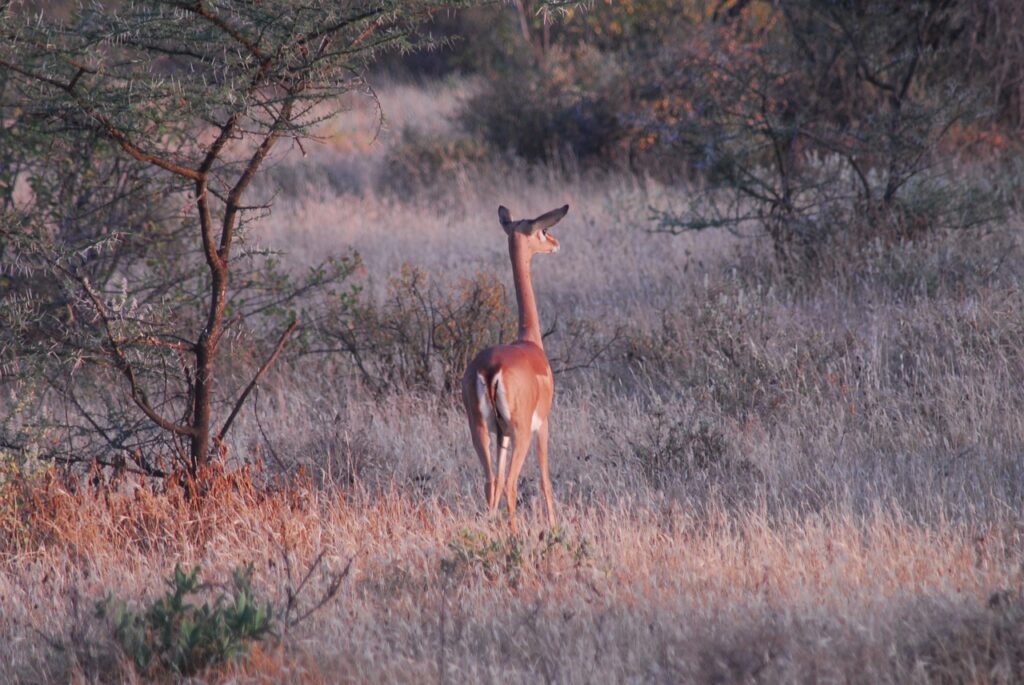Are you looking for creatures with long necks? We’ve got your back. Below you will find some of the world’s most stunning and well-known animals with long necks.
1. Giraffe:

The long-necked animal with the tufted tail is one of the largest animals on Earth, and also one of the most recognizable.
Giraffes are the tallest animals in the world, growing up to six meters tall, with females reaching 4.6 meters and males reaching five meters and weighing over 1.180kg. Their neck alone grows up to 6 feet, and its size enables them to graze higher than the grasses they eat.
They are long-necked ruminants, meaning they have a four-chambered stomach. Their necks are approximately one meter long, equal to a third of their entire body length.
The long neck is thought to have evolved to avoid competition from other herbivores for food in areas with limited resources. The giraffe’s tongue can be up to 18 inches (45 centimeters) long!
2. Okapi
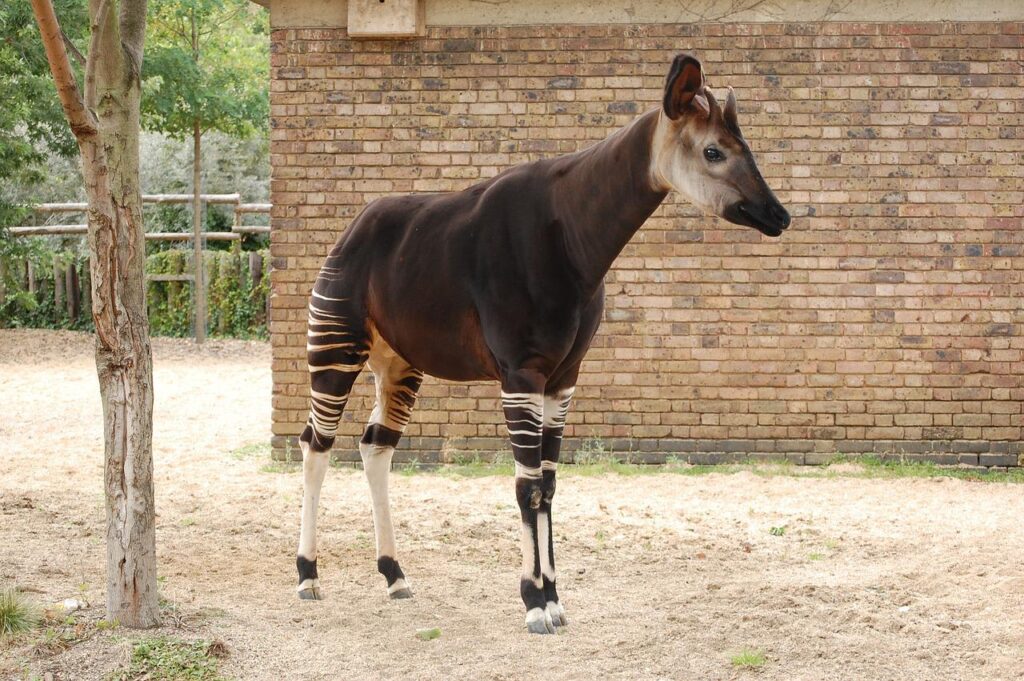
The okapi is a large herbivore closely related to the giraffe. It lives in the tropical rainforest of the Democratic Republic of Congo. Although it’s not always the case, okapi have been known to live up to 20 years in the wild, reaching an adult body weight of about 660 pounds (300kilograms).
It has a dark brown silky coat patterned with white stripes over its legs; the coat is useful in keeping the animal dry during rainy seasons.
It has a long neck that can reach up to 4.9 feet in length, which is useful in allowing the okapi to browse tall trees as they prefer to eat leaves and fruits. It is also very useful when they are defending their territories.
3. The Eastern long-necked turtle:

The large snake-like head and powerful jaws of the eastern long-necked turtle are a dead giveaway that this isn’t your average turtle.
Also known as the long-necked turtle, the eastern long-necked turtle (Chelodina longicollis) is found in the freshwaters of eastern Australia. The eastern long-necked turtle is distinguished by its head and neck. The head is massive and wide, with strong jaws.
The Eastern long-necked turtle uses its long neck to shovel soft mud into its mouth while feeding. The eastern long necked turtle is a carnivore and feeds on fish, frogs, worms, crustaceans, and carrion.
4. Komodo dragon:

The Komodo Dragon (Varanus komodoensis) is one of the largest species of living lizard, measuring up to 6 feet in length. It is a carnivore and feeds primarily on mammals but has also been known to eat birds, eggs, snakes, and reptiles.
The Komodo dragon is a long-necked reptile; it has a snake-like body with limbs that are also very long. The Komodo dragon has very sharp claws and teeth and a third eyelid that covers its eyes to protect them while they are eating.
The Komodo dragon is also known for having the most poisonous bite of all lizards.
5. Ostrich:
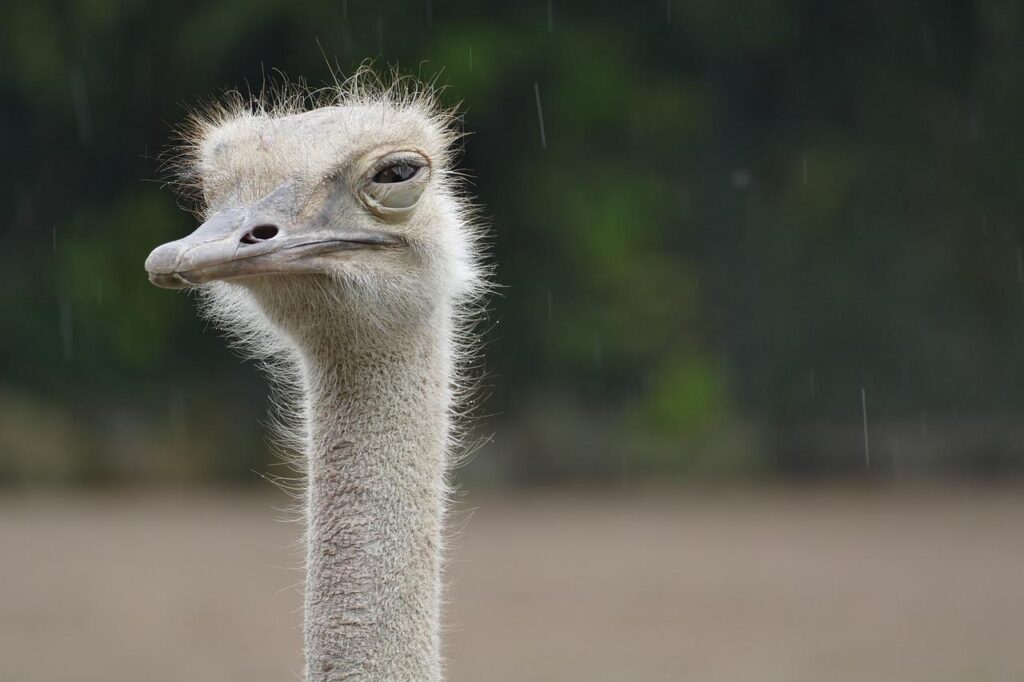
Ostriches are the largest living species of birds. They are tall, and their legs are very powerful for running.
Ostriches live in Africa and Australia, and their closest relatives are the kiwi of New Zealand and the extinct moas
of New Zealand.
Their long necks enable them to reach for food; they have the longest neck of all birds, with some ostriches having necks that measure more than 1 meter long.
Their necks are so long, that they can reach their food without getting up on their haunches. The ostrich is rare because of its small population and the fact that it lays one egg at a time, which can take up to twelve months to hatch.
They are also the fastest animal on two legs, often reaching speeds over 40 MPH.
6. Flamingo:

The flamingo is a member of the wading bird family, the Phoenicopteridae. They are found in the tropical or subtropical regions of Africa, Asia, and South America.
Males flamingos are usually much larger than females and grow to an average length of about 2.5 m (8 ft). The female flamingo is usually much smaller and can weigh up to 40% less.
Flamingos have long necks; using them, they can reach deep into the water to feed on fish, shrimp, and macroalgae.
These birds are well known for their pink attractive feathers; although adult flamingoes have pink feathers, their young ones have grey-colored fur.
7. Emus:
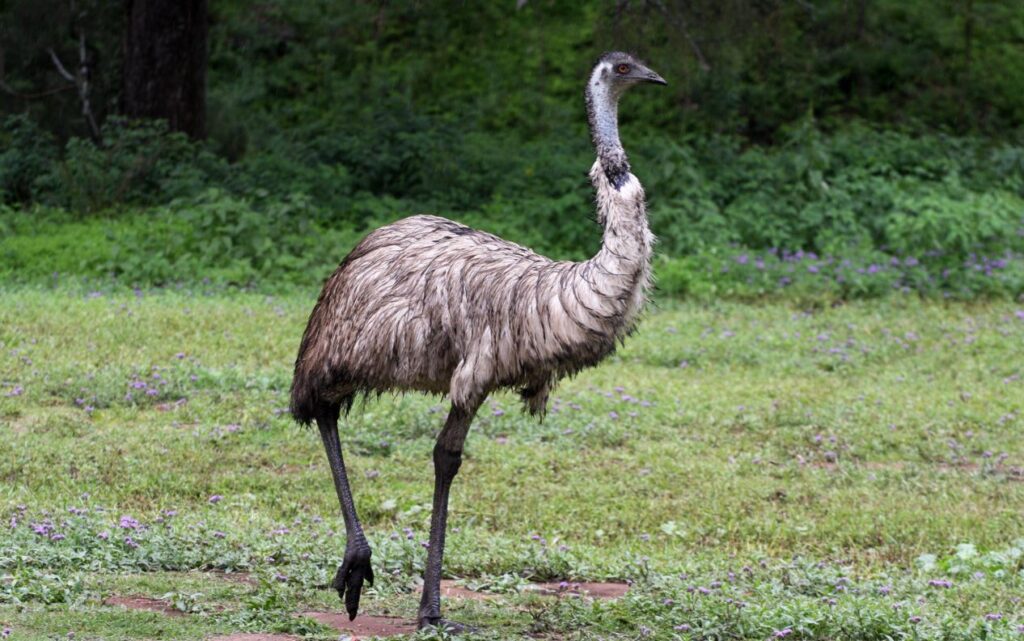
The emus are the second largest bird in Australia. They have a long neck and legs and are about 4 feet tall (1.2 meters), although they can reach 6 feet tall (1.8 meters).
The emu is a very large flightless bird. It has brown plumage, blue-grey on its face and neck, pink facial skin, and wattles around its head.
They feed on grasses, insects, roots, birds’ eggs, small vertebrates, and seeds. The emu cannot fly due to their small vestigial wings but can run very fast.
The male emu is larger than the female and has a huge beak and long neck, which it uses to defend its territory from other males. Emus have very large feet with small toes used for digging for water.
8. Alpacas:

Alpacas are camelid mammals that inhabit the highlands of South America. They are small relatives of camels, although they look more like long-necked sheep. They are between 4 and 6 feet long, although they can reach up to 3 feet at the shoulder and weigh between 50 and 90 kg.
Because of their white, fluffy hair, they can retreat into the hills and become completely invisible from aerial predators (and humans). Their eye pupils contract to a vertical slit allowing them to get a better view of predators in the distance.
The alpaca’s neck is muscular and strong, providing power for head-butting. They are well adapted to high altitudes.
Their feet feature two toes on one side and three on the other, which can act as a tripod when standing upright.
9. Ibis:

The ibis is an African bird whose long neck enables it to reach for food on high branches.
The ibis also has a long beak that helps them feed on fish when they dive underwater in pursuit of prey.
Ibis are monogamous, and breeding pairs will always stick together, even after the chicks have fledged.
The head of an ibis is quite large, which helps them to filter the food they eat through the long beak. Their neck is typical of birds in general – it’s used to reach for food that is higher up.
The long neck can reach up to three times its body length, or 5 feet (1.5 meters).
10. Whooping Crane:

The whooping crane is a rare American bird with a long, thin neck and legs. They are the tallest birds in North America at up to five feet. During migration, they stop at the Gulf of Mexico to take a rest. While resting, they feed on frogs, fish, or crustaceans.
They live on the edge of woodlands and marshes near wetlands or fields with grasses, berries, and other food items.
They use their long, slender necks to spear the water-catching fish. They are migratory birds that travel from northern Canada to central Panama, stopping at lakes and rivers for resting spots.
11. Great Egret:
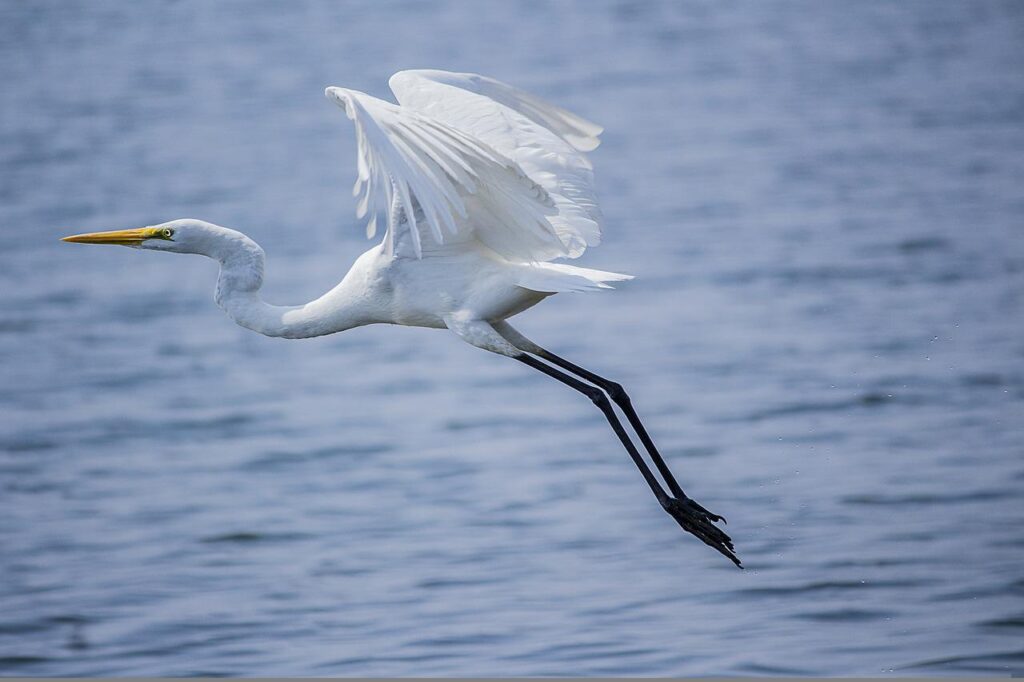
The Great Egret is a large white bird with a strong, straight, long yellow bill and long neck and legs. Their diet consists of whitefish, frogs, insects and worms, snakes, and small heron chicks. They also eat frogs when they are breeding. The great egret’s wingspan can reach up to six feet.
This large wading bird is native to the Americas, from the Gulf of Mexico to southern California and south to Patagonia. They are about 100cm long and weigh about 2 pounds (907 grams).
Their long necks are used for foraging for food; their strong bills help them to eat their prey.
12. Dromedary Camels:
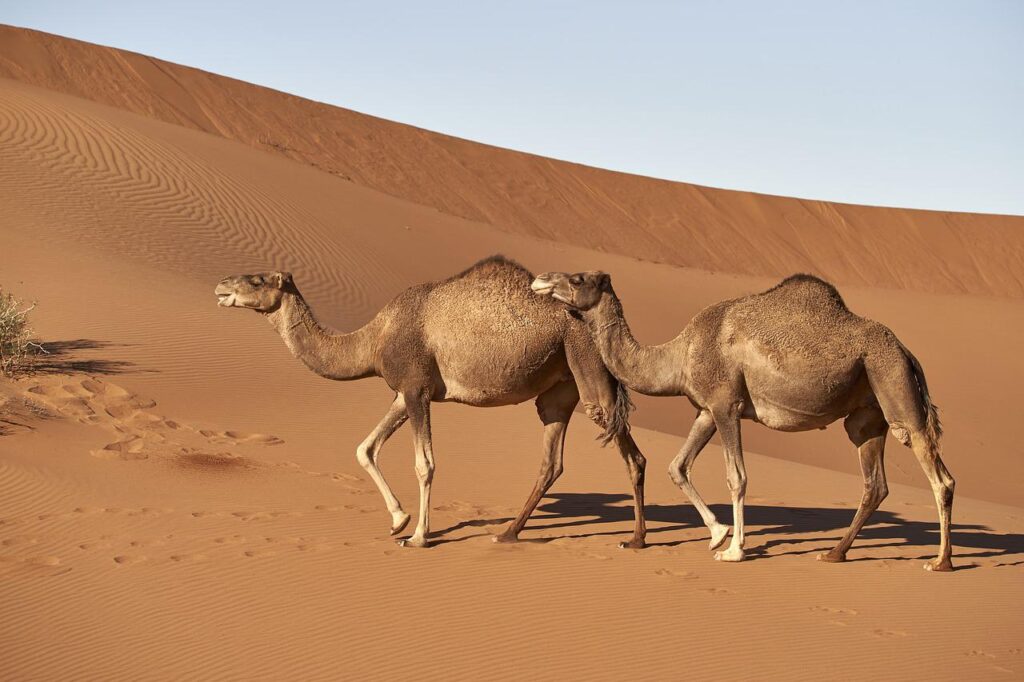
The dromedary is a member of the Bactrian family of camels (Camelidae). There are two types, the Arabian and the Asian.
The Arabian camel is found in North Africa and southwest Asia, while the Asian camel is found along the Silk Road. Dromedary camels have been domesticated for about 5,000 years. They are mainly used for transporting goods and passengers.
Their long necks carry water up to their mouth, which is high in the chest area.
13. Gerenuks :
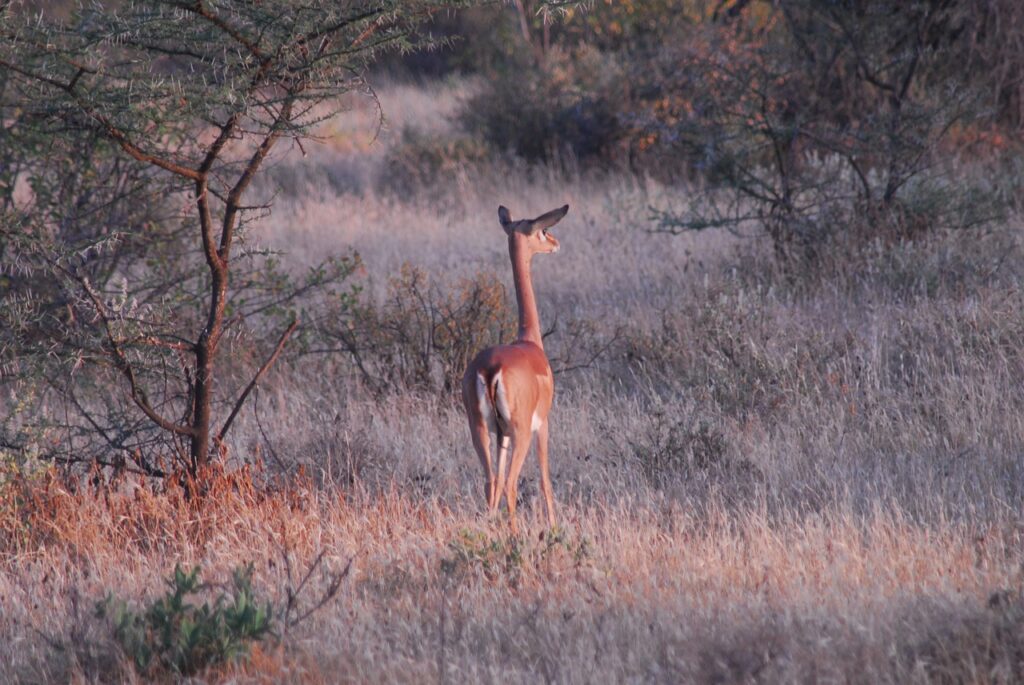
The gerenuk, called the giraffe-necked gazelle, is a long-necked antelope species. Gerenuks have very long necks and legs. Their necks are very flexible and can get as long as six feet. The gerenuks’ main food source is acacia trees. They feed on long twigs by stretching their necks vertically and reaching for the tree branches.
They have curved long horns used as protection from predators. Gerenuks are found in Africa, from Ethiopia to Somalia and
east to Uganda. During the day, they live in dry areas with tall grasses, scrub lands, open woodlands, and rocky hillsides.
14. Rhea:
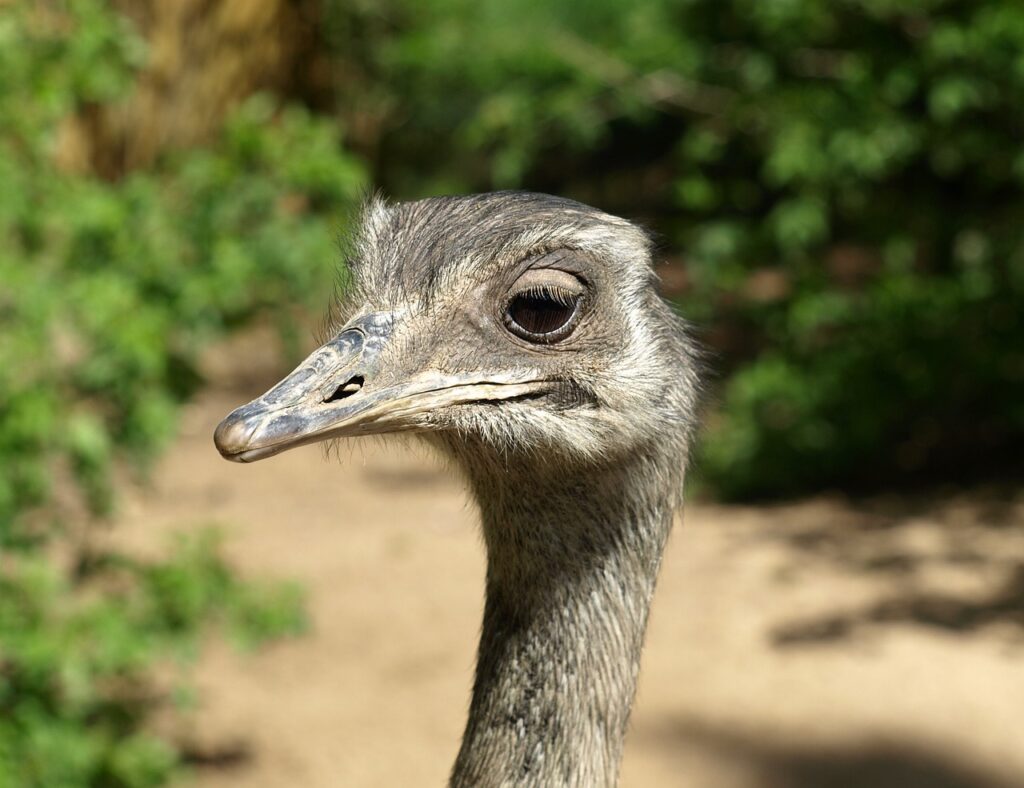
There are many types of rheas throughout South America and Africa. However, the most well-known species is the Chilean Rhea. Their size varies from being very small to being very large. The average rhea is around 2 feet tall, while some rheas have been known to reach 4 feet in height.
They are commonly found in areas like grasslands, savannas, and deserts.
If a rhea is threatened, it will run away.
If a rhea cannot escape, it will use its legs or wings to defend itself. Rheas are known to kick with their feet and run away. They can also flap their wings at predators.
Rheas eat seeds, leaves, and plants found in the grasslands where they live.
15. jabirus:

The Jabiru is a large stork found in South America. The jabiru is a carnivore that eats things like snakes, fish, and insects.
Their necks are a unique feature among storks. They are approximately 5 feet long and have a wingspan of up to 8 feet and very powerful legs.
The long necks of Jabiru storks are thought to be a defensive mechanism. By stretching their neck out, they can use it as a weapon against birds of prey.
Their nests are built on the ground and placed in sheltered places with no predators. Their nests are constructed using sticks of plant fibers, grass, and dried animal droppings.

